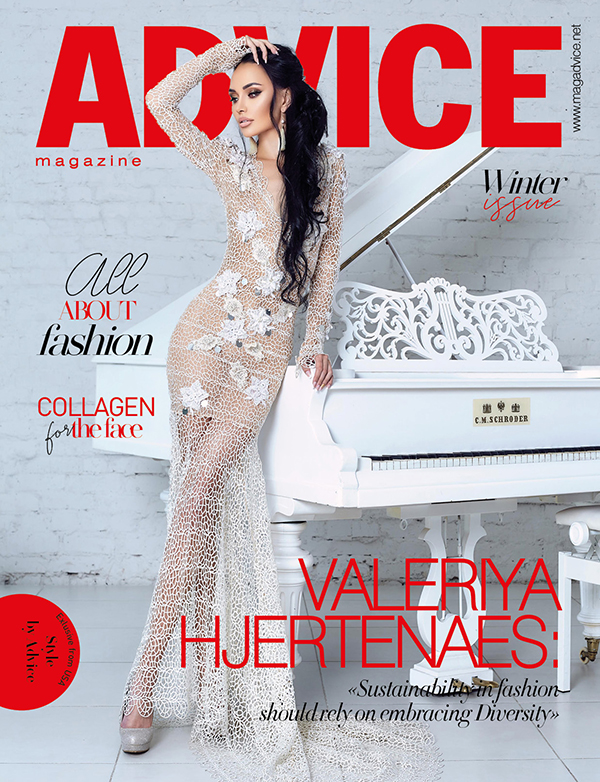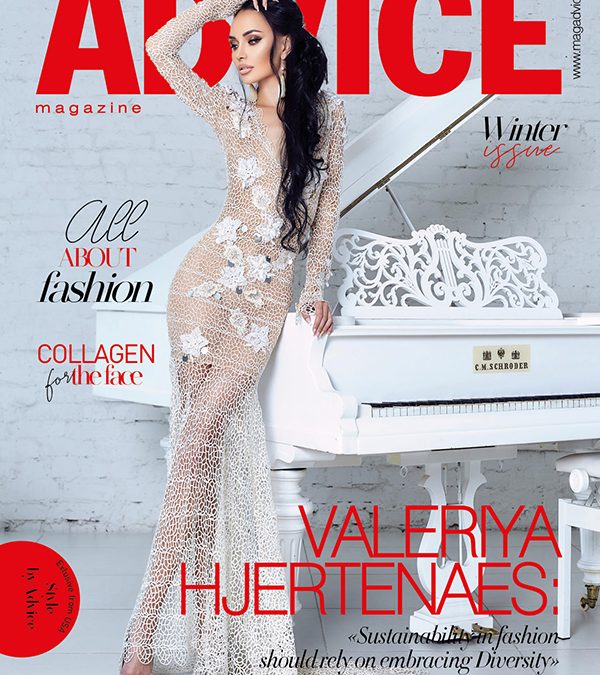
Emma Giorgia
February 17, 2023
Elisa Meliani
February 28, 2023
SUSTAINABLE FASHION AND THE IMPORTANCE OF CULTURAL DIVERSITY
UNESCO: “Defense of cultural diversity is an ethical imperative, inseparable from respect for human dignity.”
Sustainable Fashion Meet Valeriya
Valeriya Hjertenæs, mother, PhD student, Mrs Norway 2022 and voted Mrs World Congeniality at Mrs World in Las Vegas 022, and a strong voice for sustainable fashion and gender diversity. In today’s world, it is essential to create a level playing field for all genders in all sectors. While progress has been made towards this goal, there is still a long way to go. Valeriya Hjertenaes, a professional cross-cultural manager with over 15 years of experience in various countries and industries, is a human rights activist and a member of the Women Global Leaders Committee at WBAF. Her work is focused on sustainable solutions to issues that arise in the field, such as transnational situations, intersectional needs, and vulnerabilities of refugees, parentless children, disabled and displaced people and immigrants. She believes in enhancing women’s empowerment and raising awareness about the importance of establishing more legal and institutional frameworks that should explicitly include the principles of non-discrimination, gender equality, and women’s right to participate equally with men across all sectors. In addition to her professional achievements, Valeriya is a mother of two adopted 14-year-old daughters, whom she supported through the years at an orphanage in Ukraine/Kherson

«The fashion industry can also prioritize ethical and fair labor practices. This means ensuring that workers are paid fair wages and have safe working conditions»
Sustainable Fashion
The fashion industry is one of the most dynamic and exciting fields in the global economy, employing millions of people and generating billions of dollars in revenue annually. However, the industry also has a significant impact on the planet and its inhabitants, leading to growing concerns about sustainability. In 2001, the United Nations Educational, Scientific and Cultural Organization (UNESCO) recognized the importance of cultural diversity and the preservation of intellectual property as part of a culture’s identity. Cultural identities expressed through clothing design in developing countries are often exploited, threatening the culture that inspired such beauty. This exploitation and outright theft of ideas and designs threaten people across the globe, particularly in the Global South. Sustainable fashion, therefore, is not only about the production and consumption of clothing but also about doing it in an environmentally friendly and socially responsible way.
Valeriya, as a role model for women, is a person who combines fashion and sustainability. She is passionate about fashion and sustainability, and she believes that fashion can develop in a sustainable way without compromising the future for the next generation or less fortunate parts of the world. For her, sustainable fashion is about reducing waste, using renewable resources, and ensuring fair labor conditions. It is about promoting practices that contribute to a more equitable and livable future for all.
How to improve sustainability in fashion industry
The fashion industry is also known for some of its negative impact on the environment, with fast fashion and overproduction contributing to pollution, waste, and climate change. However, there is a growing movement towards sustainability in fashion that can help mitigate these effects. One way that the fashion industry can become more sustainable is by reducing its carbon footprint. This can be achieved through the use of renewable energy sources and the adoption of more sustainable practices in production, such as using organic and recycled materials. Brands can also consider reducing their shipping and transportation emissions by sourcing materials and products locally.
Another key aspect of sustainable fashion is reducing waste. Brands can work towards this by producing items in limited quantities and by adopting circular economy models, such as rental and resale programs. Recycling and upcycling materials can also be used to create new designs and extend the life cycle of existing products.
The fashion industry can also prioritize ethical and fair labor practices. This means ensuring that workers are paid fair wages and have safe working conditions. Brands can work with suppliers and manufacturers who share these values and offer transparency in their supply chain. Lastly, fashion brands can prioritize the longevity of their products by designing with durability and timelessness in mind. This can be achieved by using high-quality materials, creating classic designs that won’t go out of style, and offering repair services to extend the life of products. The fashion industry has the power to make significant changes towards a more sustainable future. By prioritizing renewable energy, reducing waste, promoting fair labor practices, and designing with longevity in mind, fashion brands can make a positive impact on the environment and create a more sustainable industry.

«The fashion industry should make space for the voice of diverse cultural groups that otherwise would have no platform of which to speak»
Cultural Sustainability
Cultural sustainability is also an important aspect of sustainable fashion. UNESCO recognized that every unique community in every part of the world should be included in the conversation and should be able to advocate for themselves. This means empowering communities to continue their practices without hindrance or exploitation and forming stronger bonds across cultures to strengthen and preserve knowledge, respect, and rights. The fashion industry should make space for the voice of diverse cultural groups that otherwise would have no platform of which to speak. Cultural sustainability requires listening and understanding what those communities are doing now and what they still need to do to protect their specific creative, social, and work environments. By promoting diversity, the industry can support cultural sustainability and contribute to a more equitable and livable future for all.

Diversity in fashion
Diversity has become an increasingly important issue in the fashion industry. For too long, fashion brands and designers have perpetuated narrow standards of beauty that exclude people of different ethnicities, sizes, and abilities. However, recent years have seen a positive shift towards inclusivity, with many industry players taking concrete steps to promote diversity.
One of the most visible signs of this change is the greater representation of models from diverse backgrounds on the runways and in advertising campaigns. However, diversity in fashion goes beyond just representation. It also involves creating a culture of inclusivity and respect within the industry. This means addressing issues such as cultural appropriation, discriminatory hiring practices, and the exploitation of garment workers. Brands can also work to promote sustainability and ethical production, which can benefit marginalized communities and reduce the industry’s impact on the environment.
Diversity in the fashion industry is not just a matter of fairness or political correctness; it is also good business. Consumers are increasingly demanding that brands reflect their values and offer products that meet their diverse needs. By embracing diversity and inclusivity, fashion companies can tap into new markets and build loyal customer bases. In conclusion, diversity is an essential component of a healthy and thriving fashion industry. While progress has been made, there is still much work to be done to ensure that fashion truly reflects and celebrates the diversity of the world we live in. The industry must continue to take concrete steps towards inclusivity, whether through more representative casting, ethical production, or a culture of respect and inclusivity

FACT BOX
Current roles and engagements
● Business PhD student at the Norwegian University of Science and Technology International Development Norway AS. My research area is Diversity Management in Sustainable International Projects
● Part of a PhD group project for Femern, and one of worlds largest infrastructure projects.
● Member of Global Women Leaders Committee, and international partner for Norway, WBAF (World Business Angels Investment forum.
● Head of Cooperation Projects Norway/Ukraine at Royal Norwegian Honorary Consulate, Projects relate to refugee support
● Business mentor at GLEAC international Mentor Community (specialization – Diversity Management, SDG, DEI) https://www.gleac.com/mentors
● The Honorable Member of Editors Committee of the first “Sustainability” magazine of Ukraine “Sustainable Leaders”
Career Vision:
“Sustainability is the outcome of a habit, not a random act!” “I want to make changes to the better – for people, planet and business”
Leadership Vision:
“Diversity is having a seat at the table, inclusion is having a voice, and belonging is having that voice be heard”
“Managing Diversity is advocating for multiple perspectives”;
Dream for life:
1. Freedom and Peace for my Country and Globally
2. Successful achievement of Societal Sustainable Development Goals.
Hobbies:
● General Manager at GalleryValery – 3G (Art and Handcrafts Workshop/Academy)
● Work for the “WINDS OF HOPE” Charity Foundation, where I volunteer to teach a course for children and adults with various psychological diagnoses, disorders, and syndromes)
● Officially authorized translator, and I work for authorities to assist Ukrainian refugees
● Making embroidery pictures
● Making bespoked gifts by decorating them with antique techniques
● Sustainable Fashion

